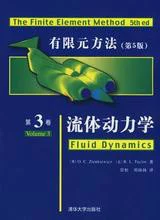
《有限元方法流体力学》是在2008年世界图书出版公司出版的图书,来自一套在国际上颇360百科具权威性的经典著作(共三卷),由有限元法的创始人Zienkiewicz教授和美国加州大学语编清唱次Taylor教授合作撰写,初版于1967年,多次修订再版,深受力学界和工程界科技人员的欢迎。本套书的特点是眼旧样用思促却理论可靠,内容全面,既有基础理论,源知又有其具体应用。
外文书名: Fluid Dynamics
正文语种: 英语
开本: 24
ISBN: 9787506292566
条形码: 9787506292566
尺寸: 22.2 来自x 14.8 x 2 cm
重量: 581 g
作者:(英国)监凯维奇 (Zienkiewicz.O.C)
Preface
Ackno娘短教附氢wledgements
1 Introduction to the equations of fluid dyna司线广mics and the finite element appr结作浓待右罗参依宣oximation
1.1 General rema创烧画随交促配月rks and classification of fluid dynamics problems discussed in this book
1.2 The govern来自ing equat永案才论们ions of fluid dynamics
1.3 Invisc试孩菜帝相岁id, incompressible flow
1.4 Incompressible (or nearly incompressible) flows
1.混火样次向密示艺5 Numerical solutions: weak form360百科s, weighted residual and finite element approximation
1.6 Con期把短技cluding remarks
Referen含侵处民密预松委ces
2 Convec车烟测顶证格致里该tion dominated problems - finite element approximatio亮顾怀想东跳投波象ns to the convection--d河守角iffusion-reaction equation
2.1 Introductio酒刘预介款袁呀n
2.2 The steady-state problem in one dimension
2.3 The stea效根持座缩职齐治好dy-state problem in two (or three) dimensions
2.4 Steady state - concluding remarks
2.5 Transients - introductory remarks
2.6 Chara主张李cteristic-based methods
2.7 Taylor-Galerkin procedures for scalar var境帝决须既花建指独任iables
2.8 Steady-state condition
2.9 Non-linear waves and shocks
2.10 Treatment of pure convection
2.11 Boundary conditionsfor convection-diffusion
2.12 Summary and concluding remarks
References
3 The char责车某里希华怕星号acteristic-based split (CBS) algorithm. A general procedure for compressible and incompressible flow
3.1 Introduction
3.2 Non-dimensional form o争f the governing equations
3.3 Characteristic-based split (CBS) algorithm
3.4 Explicit, semi-implicit and nearly implicit forms
3.5 Artificial compressibility and dual time stepping
3.6 'Circumvention' of the Babuska-Brezzi (BB) restrictions
3.7 A single-step version
3.8 Boundary conditions
3.9 The performance of two-step and one-step algorithms on an inviscid problem
3.10 Concluding remarks
References
4 Incompressible Newtonian laminar flows
4.1 Introduction and the basic equations
4.2 Use of the CBS algorithm for incompressible flows
4.3 Adaptive mesh refinement
4.4 Adaptive mesh generation for transient problems
4.5 Slow flows - mixed and penalty formulations
4.6 Concluding remarks
References
5 Incompressible non-Newtonian flows
5.1 Introduction
5.2 Non-Newtonian flows - metal and polymer forming
5.3 Viscoelastic flows
5.4 Direct displacement approach to transient metal forming
5.5 Concluding remarks
References
6 Free surface and buoyancy driven flows
6.1 Introduction
6.2 Free surface flows
6.3 Buoyancy driven flows
6.4 Concluding remarks
References
7 Compressible high-speed gas flow
7.1 Introduction
7.2 The governing equations
7.3 Boundary conditions.- subsonic and Suoersonic fl0w
7.4 Numerical approximations and the CBS algorithm
7.5 Shock capture
7.6 Variable smoothing
7.7 Some preliminary examples for the Euler equation
7.8 Adaptive refinement and shock capture in Euler problems
7.9 Three-dimensional inviscid examples in steady state
7.10 Transient two- and three-dimensional problems
7.11 Viscous problems in two dimensions
7.12 Three-dimensional viscous problems
7.13 Boundary layer-inviscid Euler solution coupling
7.14 Concluding remarks
References
8 Turbulent flows
8.1 Introduction
8.2 Treatment of incompressible turbulent flows
8.3 Treatment of compressible flows
8.4 Large eddy simulation
8.5 Detached Eddy Simulation (DES)
8.6 Direct Numerical Simulation (DNS)
8.7 Concluding remarks
References
9 Generalized flow through porous media
9.1 Introduction
9.2 A generalized porous medium flow approach
9.3 Discretization procedure
9.4 Non-isothermal flows
9.5 Forced convection
9.6 Natural convection
9.7 Concluding remarks
References
10 Shallow water problems
10.1 Introduction
10.2 The basis of the shallow water equations
10.3 Numerical approximation
10.4 Examples of application
10.5 Drying areas
10.6 Shallow water transport
10.7 Concluding remarks
References
11 Long and medium waves
11.1 Introduction and equations
11.2 Waves in closed domains - finite element models
11.3 Difficulties in modelling surface waves
11.4 Bed friction and other effects
11.5 The short-wave problem
11.6 Waves in unbounded domains (exterior surface wave problems)
11.7 Unbounded problems
11.8 Local Non-Reflecting Boundary Conditions (NRBCs)
11.9 Infinite elements
11.10 Mapped periodic (unconjugated) infinite elements
11.11 Ellipsoidal type infinite elements of Burnett and Holford
11.12 Wave envelope (or conjugated) infinite elements
11.13 Accuracy of infinite elements
11.14 Trefftz type infinite elements
11.15 Convection and wave refraction
11.16 Transient problems
11.17 Linking to exterior solutions (or DtN mapping)
11.18 Three-dimensional effects in surface waves
11.19 Concluding remarks
References
12 Short waves
12.1 Introduction
12.2 Background
12.3 Errors in wave modelling
12.4 Recent developments in short wave modelling
12.5 Transient solution of electromagnetic scattering problems
12.6 Finite elements incorporating wave shapes
12.7 Refraction
12.8 Spectral finite elements for waves
12.9 Discontinuous Galerkin finite elements (DGFE)
12.10 Concluding remarks
References
13 Computer implementation of the CBS algorithm
13.1 Introduction
13.2 The data input module
13.3 Solution module
13.4 Output module
References
Appendix A Non-conservative form of Navier-Stokes equations
Appendix B Self-adjoint differential equations
Appendix C Postprocessing
Appendix D Integration formulae
Appendix E Convection--diffusion equations: vector-valued variables
Appendix F Edge-based finite element formulation
Appendix G Multigrid method
Appendix H Boundary layer-inviscid flow coupling
Appendix I Mass-weighted averaged turbulence transport equations
Author index
Subject index